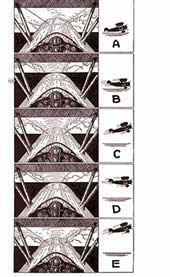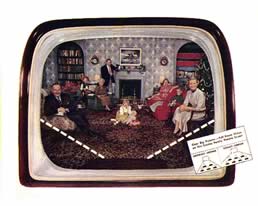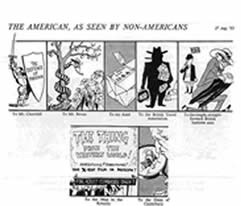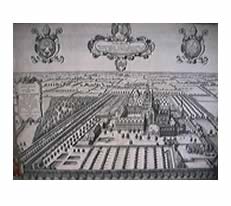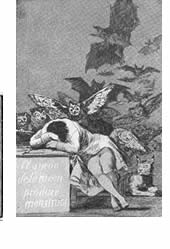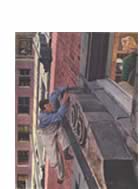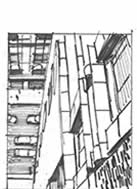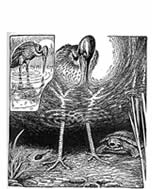01 a peculiar
point of view - at least a partial vision advertisement for The American
Meat Institute October 1950 10 x 12cms.
02 A favourite
POV in the imagery of America in the Twenties and Thirties , the depiction
of the oil derrick from above or beneath - here an advertisement for The
National Supply Company (the makers of SPANG pipes) March 1944 12 x 20cms.
Look at similar depictions in the early photographic work of Margaret
Bourke White and the paintings of Charles Sheeler.
03 "Oven's Eye View of the world's best cook" Owens-Korning
Fibreglas April 1951 22 x 27cms
04 the view from the Cockpit,Ivanatoff 1938
05 The Tele's vision of its own audience offers a new opportunity for
the image maker, Crosley's Family of Televisions gives you "Full
Room Vision", undated image, c1950. It is traditional for objects
of a certain kind to have a point of view. List them.
06 The American
as seen by the Non-American
07 the typical
bird's eye view
08 TWA advert
October 1951 20 x 23cms
09 Illustration
by Austin Briggs to a story in the Saturday Evening Post May 1953 and
study in pencil for the illustration below
10 Wilfed
Bronson's Polywiggle's Progress ,Macmillan, c1936; and an unusual POV
underwater, following the Tadpole's progress with the stork above. I do
think the illustrator has overreached himself, with shaky control of perspective
and a treatment of the water surface that makes the bird look to be wearing
exotic trousers. He has even tried to show a reverse reflection.
There is a successful filmic version of this shot in Terrence Malick's
film, Days of Heaven when the camera is lingering with a glass underwater
looking up at Richard Gere.
11. Francis
Barlow, illustration to Aesop's Fables
12. Goya print, The Sleep of Reason begets Monsters, from Los Caprichos.
Goya's compositional devices very often use a simple planar approach where
the drawn subjects are viewed head on against a backdrop - the very frontality
and directness of which increases the impact of the scenes of warfare
and human folly. The Point of View in The Sleep of Reason is nearer the
eye level of the sleeping figure than that of a standing figure.
In the 1930's camera operators employed by Louis de Rougemont, boss of
The March of Time newsreels were instructed to film the great events of
the day - assassination reconstructions, Nazi rallies, mobs of looters
- from three feet above the ground - the POV of the average movie goer
in a cinema seat. This has given a curiously furtive feeling to much of
the footage.
|
The
Point of View Designers and Illustrators. Lecture Notes
The tradition of the single viewer before the single vanishing point.
The page design as window or stream. The influence of film and the cinematic
imagination on the twentieth century illustrator and designer.
Point of View (POV) "a shot in which the camera assumes the spatial
position of one of the characters within the narrative in order to show
us what s/he sees." Cook below p.244.
Angle of View ;
Dutch, an unusual angle.
Eye Level, 5' to 6' above the ground, undramatic.
High, or down shot.
Low angle.
Reverse, the camera is positioned exactly opposite another camera recording
the same scene. Used in conversations.
Side angle, between 30% to 90% from the front of the subject.
For perspective and depth. Subjective, the camera is positioned where
it is the viewpoint of a specific character in the film.
Variants of lenses, Telephoto, Short Focus, Long Focus, Wide Angle, Haze
Lens, Zoom.
from Assen Jordanoff's Your Wings , Funk and Wagnell, New York, 1940 (1936)
with illustrations by Fred Meagher, Frank Carlson and Eric Sloane. A handy
and visually immediate guide we could all learn from when thinking about
drawing objects moving through space.
It can also entail one individual or group seeing the same entity in different
ways
BASIC TECHNIQUES; Examples Discussed
1. BA advert , film space and narrative at its limits. 2. TAG beer advert,
the perils of POV.
3. March of Time , two clips where the spectator takes part by implication.
The view from the cinema seat.
4. The classical movement through space, the camera on the dolly, illustrated
by Max Ophuls, Caught (US 1948 88 mins).
5. Eli's Killer Crane. The Stunt Man , directed by Richard Rush, 1978.
A film about film making, private moments are deliberately confused public
events in film making. The director, Peter Toole intrudes in the seat
of the Crane.
6. Steadicam ( remember from Shining ) Gerrit Brown using the camera mounted
to the operator's body and gyroscopically controlled.
7. The Steadicam at work, Exorcist II , John Boorman, 1977, the POV of
the giant insect, Richard Burton as a priest in an electronic headband.
Falling through space, the view down..
8. Tex Avery, Bugs Bunny , what animation can add to the downward view.
9. Animation to "And She Was", Talking Heads.
10. The impact of the aerial view on the twentieth century mind. Isle
of Wight.
11. The privileged aerial viewpoint, The Birds, 1963 the celebrated burning
garage scene viewed by Tippi Hedron ( her 3 take) and the gathering gulls.
NOW, the
narratives
1. Barry Lyndon , Kubrick, 1975 the retreat of the camera, focussing back
to add distance to the emotive power of the relationships revealed.
2. The classic slow dolly take, Orson Welles' The Touch of Evil , 1958.
No cuts, a fluid flow through fixed space and time.
3. The camera recedes from the drama, the power of understatement and
not looking. After the first horrific murder, Hitchcock takes us to another
only to silently remove the camera and leave the rest to the imagination.
Frenzy, Hitchcock, 1972.
4. After Hours , the dislocation of time, slowing down and cutting the
falling bunch of keys, to unsettle the viewer.
5. Split screen narratives, slow motion emotion, Carrie, directed by Brian
de Palma, 1976.
6. Two different time systems in the same frame, Easter Parade, 1948,
Fred Astaire dancing in two speeds.
7. The capacity of film to be the vision of one character, the Father's
vision of the pig from Amiel's The Queen of Hearts , 1989.
8. The highly subjective camera, fear and anxiety in Hitchcock's camera,
The Wrong Man, 1957. Henry Fonda as the innocent man arrested on charges
of robbery with assault.
 THE
LADY IN THE LAKE THE
LADY IN THE LAKE
BOOKLIST
Laurence Wright, Perspective on Perspective, RKP
London 1983;
John White, The Birth and Rebirth of Pictorial Space ,
Faber London 1972.
Pam Cook (ed) The Cinema Book, BFI London 1985.
Edward Branigan "Formal Permutations of the Point of View shot", Screen , Autumn 1975
Bordwell and Thompson, Film Art, pp 242,3; point of
view analysis of a Hitchcock film.
 LIFE MAGAZINE 1920, SPRING FEVER LIFE MAGAZINE 1920, SPRING FEVER
|







